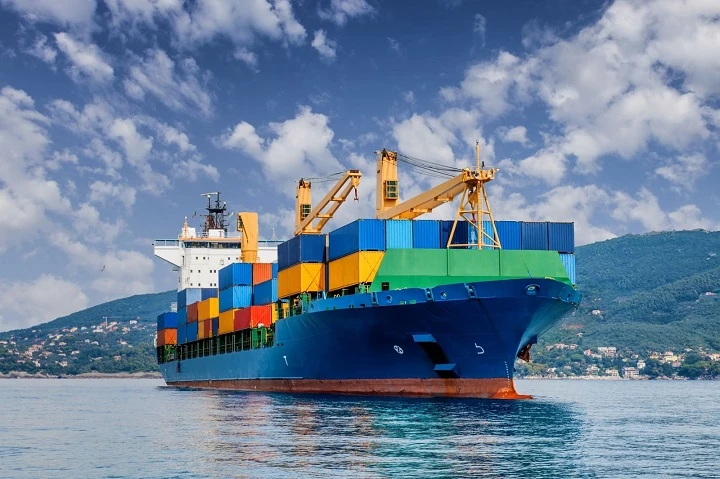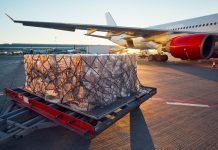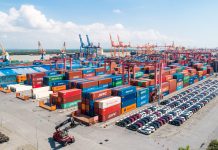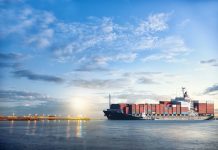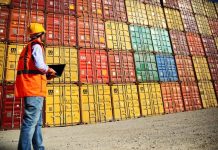Transporting domestic goods by sea is suitable for a variety of products, low transportation costs and high safety. Understand more about this form in the following article!
Besides road and air, transporting goods by domestic sea is also chosen by many businesses because it is suitable for a variety of products, high safety and reasonable price. In the following article, InterLOG provides more information about this form, including fees, sea shipping time and which items it applies to. Please continue to follow!
1. What is transportation of goods by inland sea?
Inland sea transport is a form of transporting goods from one area to another within a country via waterway/seaway.
Accordingly, after being specifically classified, the goods are packed into sturdy containers, loaded onto ships and transported. Means of transport at sea are usually ships and barges combined with marine infrastructure systems such as seaports and transshipment ports, helping goods to be delivered conveniently and safely after the ship docks.
Domestic sea transport is an economical form of transport, ensuring high safety, chosen by many businesses today.
2. Advantages and disadvantages when transporting domestic goods by sea
Currently, domestic sea transportation has become a transportation trend chosen by many businesses because it brings the following 4 outstanding benefits:
Domestic sea transport is suitable for a variety of goods, especially bulky and oversized goods.
Transporting goods by domestic sea has low costs and does not incur other surcharges, thereby optimizing profits for businesses.
As a natural and open traffic route, sea transport ensures high safety, collisions rarely occur.
Inland sea transport contributes to developing the marine economy and expanding economic trade between regions within a country.
>> See more: Latest domestic and international sea freight rates
Along with the advantages, domestic sea transport also has some disadvantages such as:
Shipping time is slow, so for items that want to be transported quickly and urgently, domestic sea transport cannot meet the requirements.
Transporting goods by domestic sea cannot be delivered to the destination on land but needs to be combined with other modes of transport such as trucks.
Depends a lot on the weather and natural conditions at sea. Typically in Vietnam during the rainy season, the productivity and working frequency of transport ships is almost very low.
Inland sea transport is also not suitable for goods that perish quickly and whose quality decreases over time.
Along with outstanding advantages, inland sea transport also has disadvantages such as slow shipping time, dependence on natural conditions and not suitable for perishable goods.
3. Characteristics of inland sea transport?
The following are also characteristics of domestic freight transportation by sea:
3.1. Delivery time
Shipping time by sea is 1 – 2 days slower than by road and rail. In particular, when the weather at sea is not favorable, the shipping time can be extended to 1 month.
>> See more: What is road transport service?
3.2. Carrying capacity
The carrying capacity of inland sea transport is very large, with no limitations on size, quantity or volume of goods. Therefore, this form is suitable for transporting a variety of different items.
3.3. Transportation costs
As a natural infrastructure with no costs for upgrading or repairing, transporting goods by inland sea has lower costs than other popular forms of transport.
4. Factors affecting sea freight rates
How much does domestic sea transport cost is a common concern of many businesses today. Normally, domestic sea freight rates are not fixed because they depend on a number of factors:
4.1. Gasoline prices
Gasoline costs greatly affect domestic sea freight rates. Specifically, when gasoline prices fluctuate, fees may increase or decrease accordingly.
4.2. Weather condition
For areas with harsher climatic conditions, domestic sea transport costs increase, leading to a decrease in the need to transport goods to that area.
4.3. Scarcity of empty containers
The scarcity of empty containers (container shells) causes container rental prices to increase, causing fluctuations and changing the price of transporting domestic goods by sea.
>> See more: Increasing the reuse of empty containers
4.4. According to the specific nature of the goods
Most high-value goods, chemical goods, fragile goods, goods requiring special storage or transportation conditions, have higher sea freight rates than normal goods.
Transporting domestic goods by sea is suitable for a variety of products, low transportation costs and high safety. Understand more about this form in the following article!

